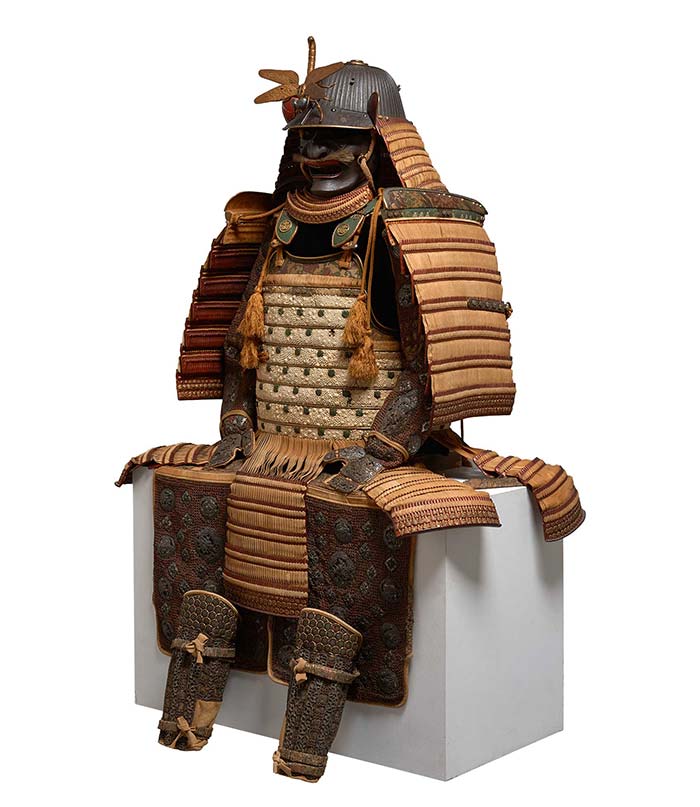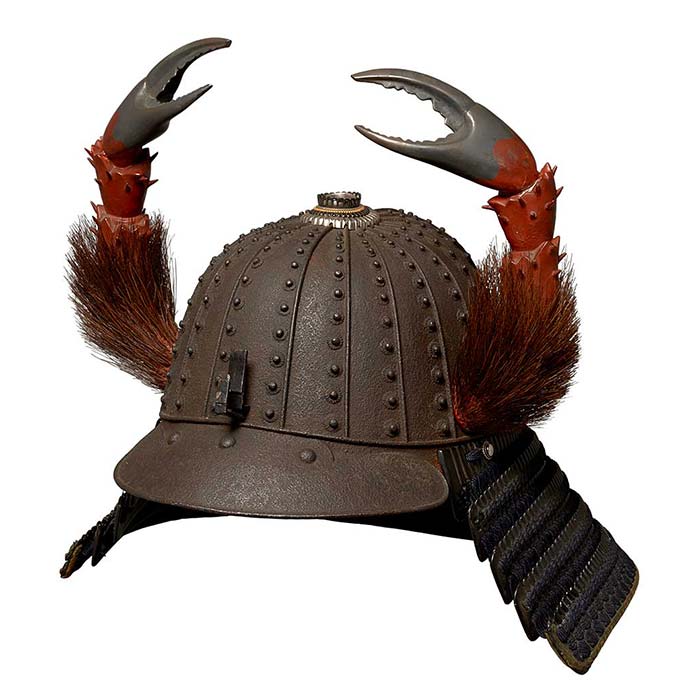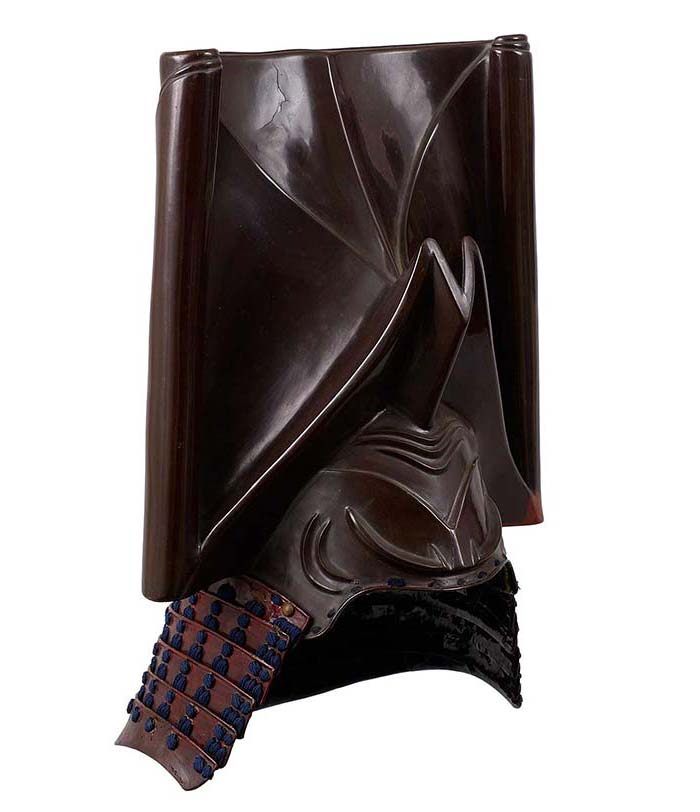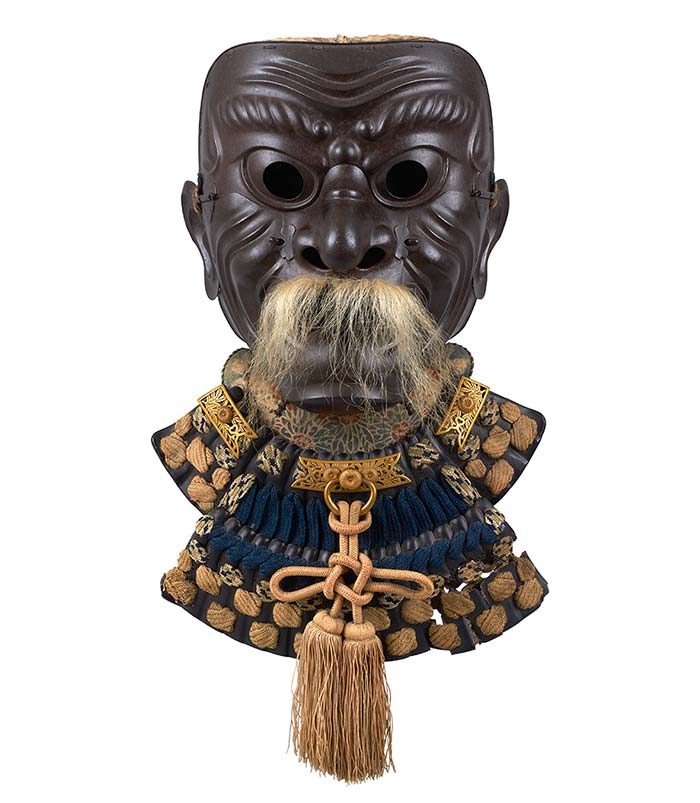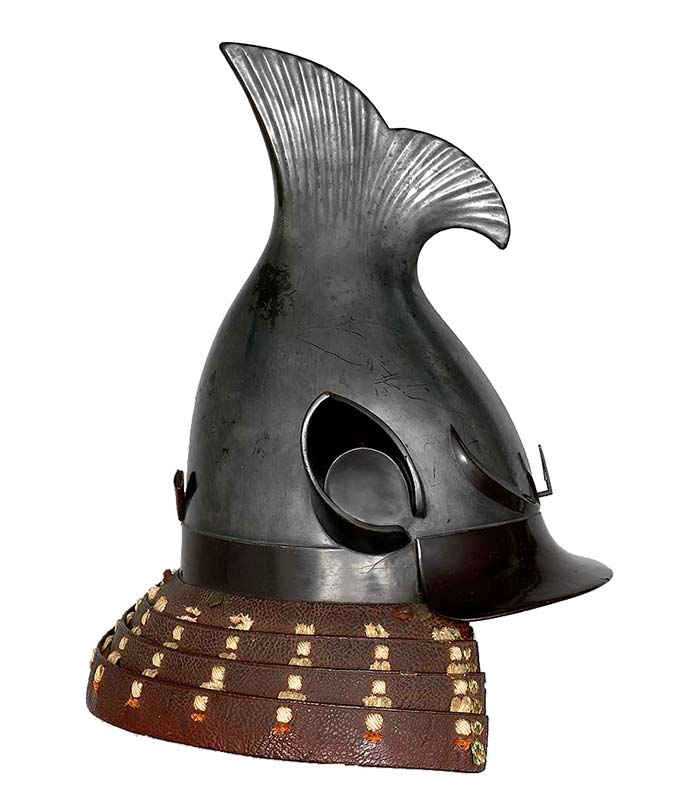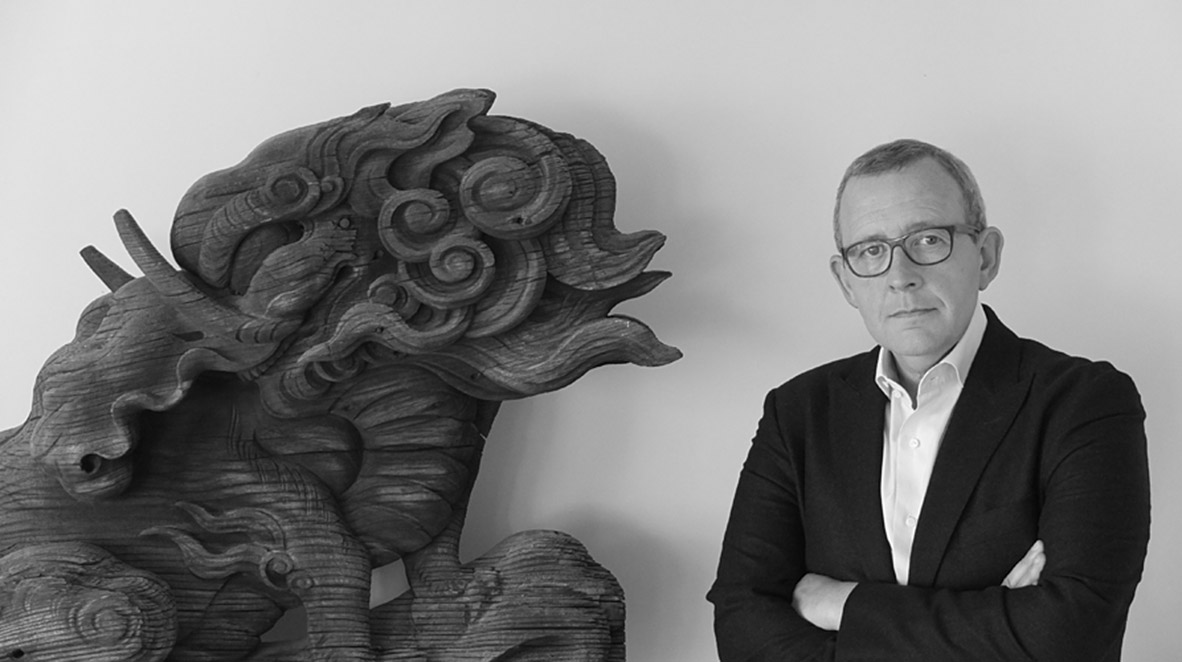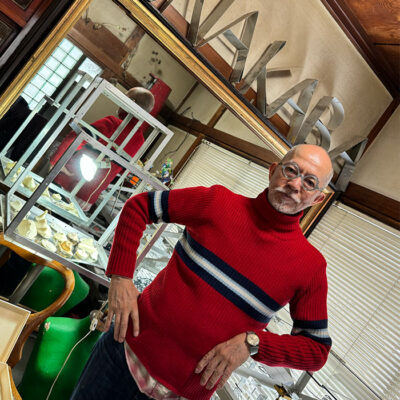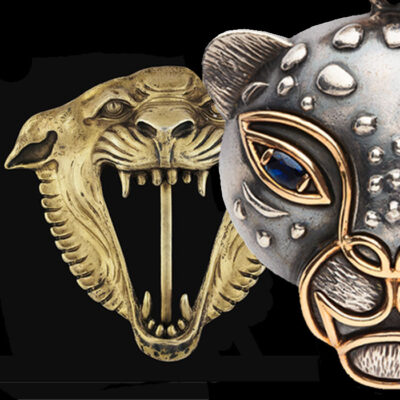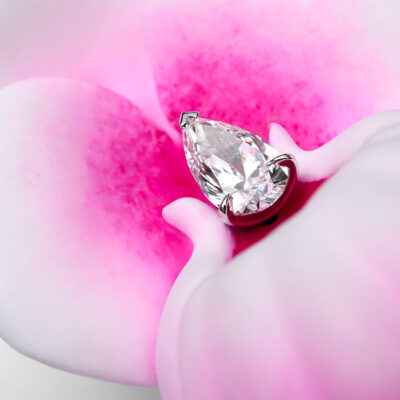Style
24 November 2016
Share
Jean-Christophe Charbonnier and his warrior jewelry
Silk, sculpted and crafted metal, gold … Japanese armor is akin to real ornaments. Jean-Christophe Charbonnier, a world-renowned specialist who provides pieces to leading museums like the Guimet or the Louvre in Abu Dhabi, decrypts it for us.
Is it an anachronism to see samurai armor as an aesthetic object, or was the concern for beauty there from the very beginning?
For us Westerners, art has an ostentatious dimension linked to the sacred. Japanese civilization, for its part, easily conceives that an ordinary object, like a teaspoon, may have an artistic dimension. Utility does not obliterate the beautiful, a fortiori when the objects are designed for the important people of Japanese society. In these weapons nothing is gratuitous: all ornamentation has a meaning.
In this culture where men do not wear jewelry, does armor serve the role par excellence of ornamentation?
There is indeed a dimension of appearance. It must be a reflection of power, of political, military and financial power. Hence the sumptuousness of the brocades, silk laces and golden threads. But it is also a weapon of defense. To possess armor, it was necessary to have horses and therefore to have substantial revenues like the daimyos once did. These great feudal barons who possessed fiefs and spent their time making war, and whose wealth was calculated in koku, the rice production unit.
Is the armor found in museums ceremonial armor?
There was no difference between ceremonial armor and any other. All were made to defend. Japanese armor was made to resist swords and arrows, sharp and cutting weapons, while Western armor had to resist heavier, blunter weapons.
Armor is the most valuable thing because it protects what’s most important: life. Hence the relationship between superior technology and form.
The helmets are stunningly beautiful.
The abstract, magnificent, and quasi-conceptual forms give off an indescribable power and force. The Japanese helmet, designed in the sixteenth century, already had the ergonomics of those of today worn by armies the world over. As its role was not to hinder the fighter, the very high crests made up of lacquered elements are actually very light, like the incredible Kawari Kabuto.
The helmet is also a vector for abstract notions: on a model from 1580, the two elements pointing towards the sky are the tail of a swallow, a fast and spiraling bird symbolizing the speed of intervention and maneuverability in the governance of the troops. On another stands a dragonfly, this insect that never recoils and which eats all others, to evoke the ability to face the opponent.
The Japanese were animists who interacted with nature. They were fascinated by the creatures with exoskeletons (external skeletons) and with carapaces: this helmet is adorned with imposing wadikate, crab pinchers lacquered red and silver with, at the base, bear’s hair.
The mix of the very sophisticated and the very crude, even the savage characterize in particular this art. Some sword scabbards are covered with tiger skin and arrow sheaths are decorated with wild boar hair. The latter are not only ornamental, they evoke the goddess of warriors represented riding a boar. In what other culture is a fish tail placed on top of a military helmet?
For a novice, the armor seems not to have varied for several centuries.
It hardly evolved from its origins until the end of the sixteenth century. Made up of metal, silk and steel scales, it offered the best protection possible. The sword did not undergo any structural changes after the twelfth century. Only with the appearance of firearms in the sixteenth century, were the scales replaced by more protective horizontal plates. The latter may be lacquered, exceptionally covered with shagreen or artificial scales to reproduce that traditional aspect.
Traditionally the great barons, the generals, charged at the head of their troops. From the sixteenth century onward, firing arquebuses obliged them to remain behind, and so they began wearing spectacular helmets visible from afar by their troops; these are today my specialty. From then on the armor didn’t evolve much further until the nineteenth century.
What fascinates you so much in this armor?
Its light and dark side. The paradox between the pieces’ refinement, ornamentation and the fact that they served so many cruelties. This is what gives them that power and strength.
Interview by Ludovic Leonelli.
Galerie Jean-Christophe Charbonnier
Japanese Arms, Armour and Works of Art
52, rue de Verneuil – 75007 PARIS
+33 (0)6 62 18 02 99
www.artdujapon.com


